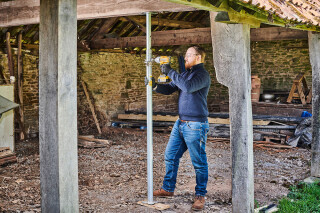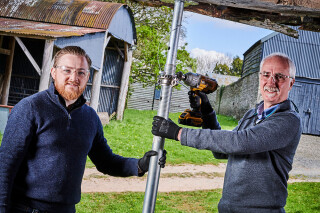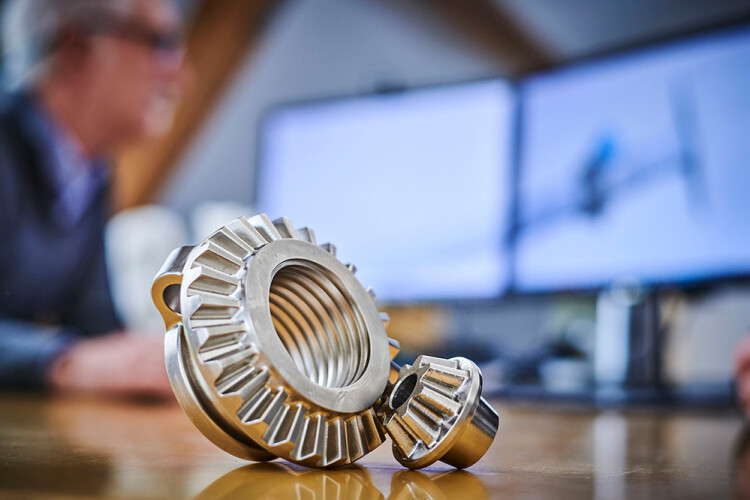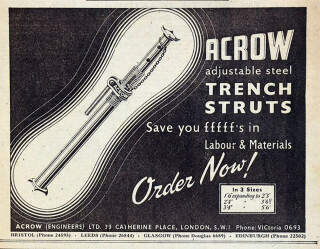There are many familiar everyday products that got it right first time and have remained essentially unchanged for generations: the teapot, for example, or the bicycle.
But as American philosopher Ralph Waldo Emerson is supposed to have said: “Build a better mousetrap and the world will beat a path to your door.”
And so it is with one of the most familiar pieces of building-site equipment: the ubiquitous Acrow prop.
Most builders would be lost without this telescopic steel support strut, used for temporary shoring and propping in innumerable applications. Its unique selling point is the adjustable screw collar that allows accurate and secure adjustment to the desired length.
It is hard to see how such a simple but effective device could be improved. But Grove Design, an industrial product design company based in Leominster, Herefordshire, thinks it has found a way.
The result is the J-Strut, very recognisably an Acrow prop, but with a difference.
Whereas the standard Acrow prop is adjusted manually, with a lever attached to the screw-collar, the J-Strut has a crown gear collar that is screwed up and down with the aid of an electric impact driver, another piece of standard site equipment.
Grove Design founder and chief design engineer Austin Owens developed the product having experienced the frustration of using traditional Acrow props himself on a renovation project.
The Acrow is easy to adjust in principle, but in practice, winding the collar up and down by hand can be slow and awkward.

Owens challenged his colleagues to come up with a solution that would transform the time-consuming process to make it safe, quick and easy to adjust the supports using a standard impact driver.
After months of consultation and numerous prototypes, the answer involved replacing the threaded collar with the patented J-strut gear collar, which can be wound up and down to adjust the support height using the J-strut pinion gear.
“Despite their global success, setting up temporary steel supports is still time consuming, labour intensive and fraught with the risk of injury,” says Will Helme, one of the designers on the project.
“Spinning the collar to the right height requires physical effort and when threads are caked in dirt, rust and cement it takes significantly longer and can feel a hundred times harder. We found that out for ourselves and often innovation comes from trying to solve a problem in everyday life.”
He continues: “J-strut removes the need for manual adjustment of the collar, avoiding the frustrations that come with repeatedly winding and adjusting. All the effort to overcome friction is done by the impact driver, reducing operator fatigue, and minimising the chance of injury from human error.
“Temporary support often needs to be deployed and removed quickly to facilitate a smooth build process. Our system enables rapid deployment by greatly reducing the time taken to spin the collar to the correct height. If a support is up against a wall and the operator can only turn the collar half a turn at a time, an adjustment that would usually take minutes to complete manually can be achieved with J-strut in a matter of seconds.”
The original Acrow prop was the brainchild of Swiss émigré William de Vigier who applied his inventiveness not only to the product itself, but also its name. The story goes that, realising that his own name did not exactly trip off the British tongue, de Vigier named the prop in tribute to the solicitor who helped him register the patent – one Arthur Crow.
“I did a similar thing with the J-Strut,” says Owens. “I named it after my father-in-law, who also helped me. His name is Jim Stout – I only had to change one letter of his surname.”
Despite the apparent simplicity of the J-Strut idea, the concept went through a number of iterations before the design was finalised. “We looked at different options but kept coming back to the original idea. The use of the impact driver seemed pretty obvious,” says Owens. “There’s one on every site.”
The crown gear is a cast steel unit whereas the pinion, which is subject to higher loads, is forged, says Owens.

Production of the J-Strut components is contracted out to specialists from the Manufacturing Assembly Network (MAN), a collective of eight Midlands-based manufacturing and engineering companies. Austin Owens is co-chairman of MAN and Grove Design is one of only two non-manufacturing members of the group.
The J-Strut’s steel forgings are made by Kimber Mills, based in Cradley Heath, and precision machining is done by Muller Group of Redditch. For the steel castings, J-Strut has had to go outside MAN to Novacast, a specialist in precision castings based in Melksham, Wiltshire.
J-Strut represents a significant diversification for Owens. Grove Design is not itself a manufacturer; as the name suggests, it provides third parties with design services so they can manufacture their own products. So why would Grove Design patent a new product and set up a new company to produce it?
“Well, we set up J-Strut as a separate business because we don’t want it to distract from our core business, industrial design,” says Owens. In the very early stages of the project, Owens had talks with a local builder who was very enthusiastic about the concept but didn’t have the resources to put such a product into production.
He also had discussions with a lot of people in the scaffolding industry, including manufacturers, and became convinced of the J-Strut’s market potential.
But no scaffolding company wanted to partner with Grove Design to produce the J-Strut, perhaps because, with an inventory of traditional products that continue to sell well, they saw no reason to disrupt the market by offering a ‘better mousetrap’.
“We felt we had to get the ball rolling ourselves because they’d have done nothing,” explains Owens.
So having set up a new business to produce the J-Strut, the challenge for the design team now is getting to market. Licensing production to a manufacturer isn’t completely ruled out, but until then J-Strut will produce the product with its MAN partners and sell direct to the end users, hire firms and leasing companies.
Now, where did I put that impact-driver…
Acrow’s origins

Austin Owens, designer of the J-Strut, must know how Swiss-born William de Vigier felt when he started trying to promote his revolutionary Acrow prop back in the 1930s.
De Vigier arrived in the UK in 1935 and set up a small engineering workshop under a railway arch in east London. There he invented and started making his screw-adjustable steel props. At the time, builders used wooden poles, sawn to length on site and secured with wooden wedges, as temporary supports.
De Vigier struggled at first to persuade the building trade to abandon their old customs and invest in his superior, but more expensive, alternative. But contractors, including Sir Robert McAlpine, eventually saw the light and started buying the product. By 1939 de Vigier estimated that there were more than 40,000 Acrow props in use on British building sites.
Like many engineering firms, the Acrow business contributed to the British war effort during World War II. Afterwards it grew rapidly, both at home and abroad. Besides the famous Acrow prop, the firm made bridge panels, formwork and numerous other construction products.
In the late 1960s Acrow Group became a big name in cranes, buying Priestman of Hull and, later, Sunderland-based mobile crane manufacturer Coles Cranes.
Acrow Group went into administration in 1984 and its constituent businesses were either closed or sold off.
William de Vigier died in 2004, aged 91.
Pooling resources
The Manufacturing Assembly Network (MAN) is a group of eight complementary manufacturers based in the Midlands and offering a single-source engineering and manufacturing service for customers in a variety of industries.
The group offers a range of specialist services ranging from aluminium casting, forging and metal stamping through to CNC machining, fluid power, electronics and injection moulding.
Grove Design is one of two non-manufacturing members of MAN. The other is WMG, formerly Warwick Manufacturing Group, a research and knowledge-transfer specialist and an academic department of Warwick University founded in 1980 by Prof Lord Kumar Bhattacharyya.
Got a story? Email news@theconstructionindex.co.uk




